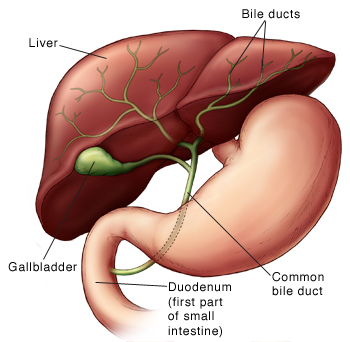Your Child's HIDA Scan
Your Child's HIDA Scan

Tell the technologist
The scan is done by a technologist. For best results and your child’s safety, tell the technologist if your child:
Has any allergies or a history of severe allergic reactions
Has any health problems
Takes any prescription or over-the-counter medicines, herbs, or supplements
Has ever had surgery
May be pregnant or is pregnant
Before the scan
Your child shouldn’t eat or drink anything for 6 hours before the scan. Unless told otherwise, your child can take any daily medicines with a sip of water.
During the scan
Your child may be given medicine (a sedative) that makes him or her relaxed and sleepy during the test. During the HIDA scan:
Your child lies on his or her back on a table. The marker fluid is put into your child’s vein by a shot (injection) or by IV (intravenous) line.
The marker travels to the liver and through bile ducts to the gallbladder. A scan is done to follow the marker’s path.
If your child has been having symptoms, such as upset stomach or cramping, these may occur during the scan. This is normal. The symptoms will go away when the scan is over.
The provider may inject a hormone called cholecystokinin (CCK) during the scan. This is a hormone that is secreted after you eat a fatty meal. It causes the gallbladder to contract, so bile flows into the first part of the small intestine (the duodenum). If your child has symptoms after the hormone is injected, this may help the provider understand the cause of previous symptoms. In some cases, your child may eat a high-fat meal during the test instead of getting CCK.
After the scan
When the scan is finished, your child is taken to a recovery room. He or she will be watched while recovering from the test.
If a sedative is used, it may take a few hours for it to wear off.
For certain conditions, the scan may be repeated a few times over a 24-hour period. In this case, your child may stay in the hospital overnight. Your child’s healthcare team can tell you more if this is true for your child.
The results of the scan will be ready in a few days. Your child’s healthcare team will discuss them with you then.
Helping your child prepare
Explain the test to your child in short, simple terms. Younger children have shorter attention spans, so do this soon before the test. Tell older children about the test further in advance, to give them more time to prepare.
Tell your child that a HIDA scan involves people looking at and touching his or her belly.
Describe how the test will feel, as best you can. A doctor or nurse can help. Allow your child to ask questions.
Use play when helpful. This can mean role-playing with your child’s favorite toy or object. Older children may want to see pictures that show what happens during the test.
When to call the provider
After the scan, call the healthcare provider if your child has any signs of a reaction to the marker (such as pain or a rash). A reaction is unlikely, but if it happens it can be serious.
Risks and possible complications
Exposure to medical radiation. This is typically low level and considered low risk.
Allergic reaction to the injected agents.
Belly pain or cramping from the CCK injection, if used.
Updated:
March 21, 2017
Sources:
Acute Cholecystitis: Pathogenesis, Clinical Features, and Diagnosis. UpToDate., General Nuclear Medicine. American College of Radiology/Radiological Society of North America, North American Consensus Guidelines for Administered Radiopharmaceutical Activities in Children and Adolescents, Society of Nuclear Medicine and Molecular Imaging, Nuclear Medicine - Hepatobiliary. Radiological Society of North America
Reviewed By:
Bass, Pat F. III, MD, MPH,Qureshi, Javed, MD,Image reviewed by StayWell medical illustration team.